It was one of those long weekend. After working for three consecutive weekends I was craving for a weekend gateway. Me and my friend had booked 1 day tour package of Belur-Halebidu-Shravanabelagola from KSTDC. Belur-Halebidu is about 223 km from Bangalore and had taken about 3-4 hours . The plan was to leave next day early in the morning and take off to Shravanabelagola, followed by Halebidu and Belur. Here I will tell about my experience on Belur and Halebidu….
Belur-Halebidu is like twin cities situated on the bank of river Yagachi in Hassan district of Karnataka. They are separated by short drive, both were the home for Hoysala Dynasty. Halebidu was the old capital city of the Hoysalas. During that period it was called Dwarasamudra after a large artificial lake of same name. But after repeated attack of invaders, the city was heavily damaged. It was then the capital was shifted to Belur and Dwarasamudra was renamed Halebidu or “Old Capital”. The Belur and Halebid temples are cut from the soft stone called chloritic schist. The delicate works of ivory and sandalwood handwork is reflected in the sculptures of these temples.
Chenna Kesava Temple in Belur
The Chennakesava temple is one of the classic examples of Hoysala architecture. Build by king Vishnuvardhana, this temple is dedicated to Lore Vishnu and it supposedly took 103 years to complete the structure. It is an one shrine temple on a single platform. The entire wall of the temple is covered with detailed stonework such that no portion is left blank. Sculptures of birds, elephants, lions, horses and other animals can also be seen. Apart from that, I was amazed with intricate carvings on the temple that tells the stories from the Mahabharata, Ramayana and the Purans. The sculptures inside the temple are built using ivory and sandalwood.
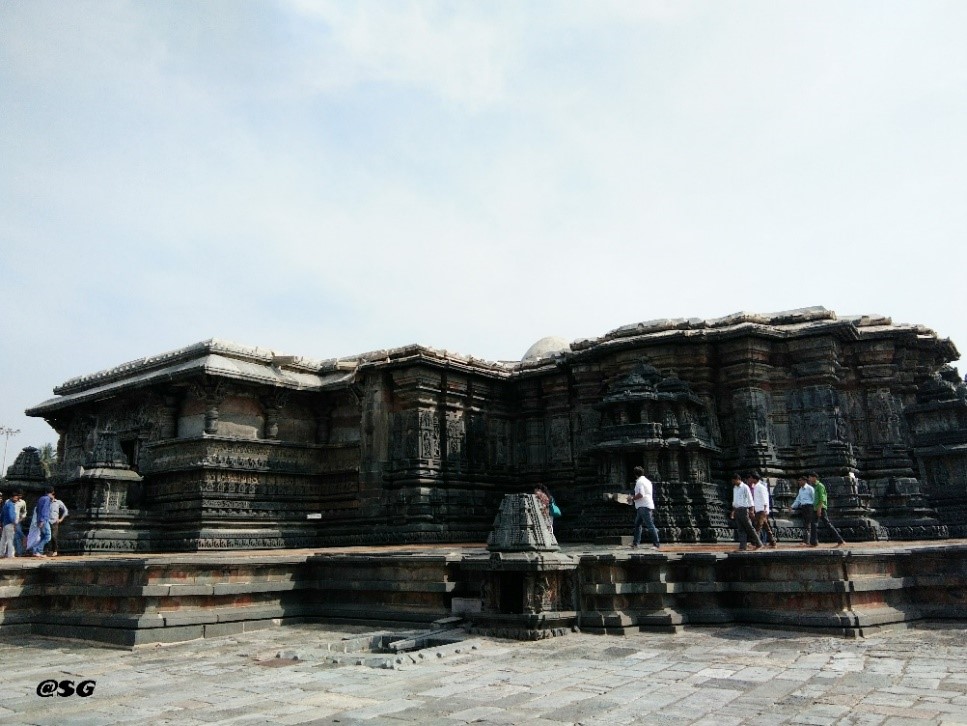
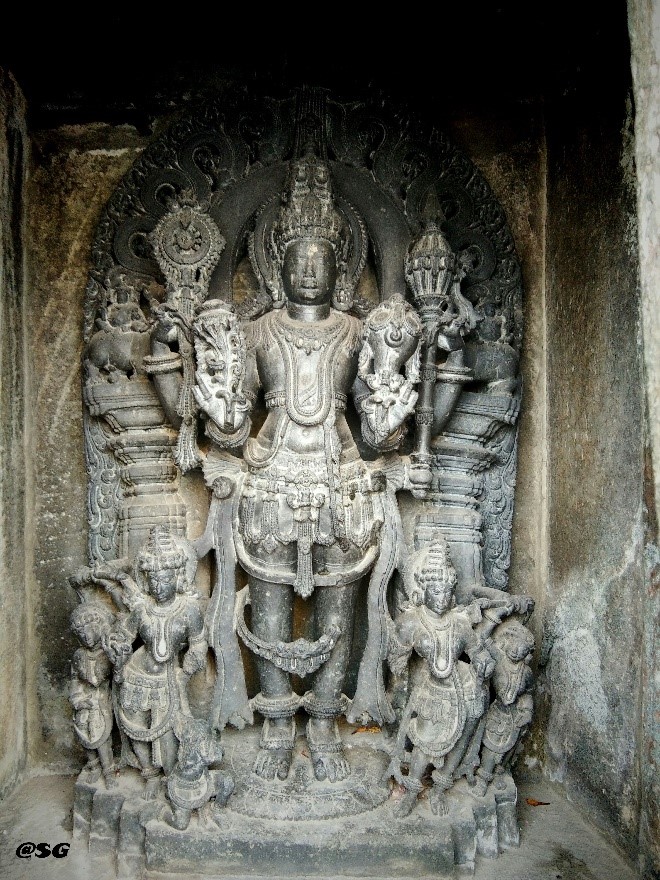
Inner Sanctum
The temple has three entrances, and their doorways have decorated sculptures called dvarapalaka (doorkeepers) on either side. Inside the temple it is dark and quiet. Pujas are performed all day for visitors and tourists. A tourist guide was guiding us. He showed us the navaranga platform on which devadasis performed their dances. The pillars and the ceiling is intricately curved with Madanikas-female figure with graceful poses. The ceiling forms a kind of octagonal hollow dome, with all the tiers or concentric rings having superbly carved figures. On the ceiling lotuses are curved.
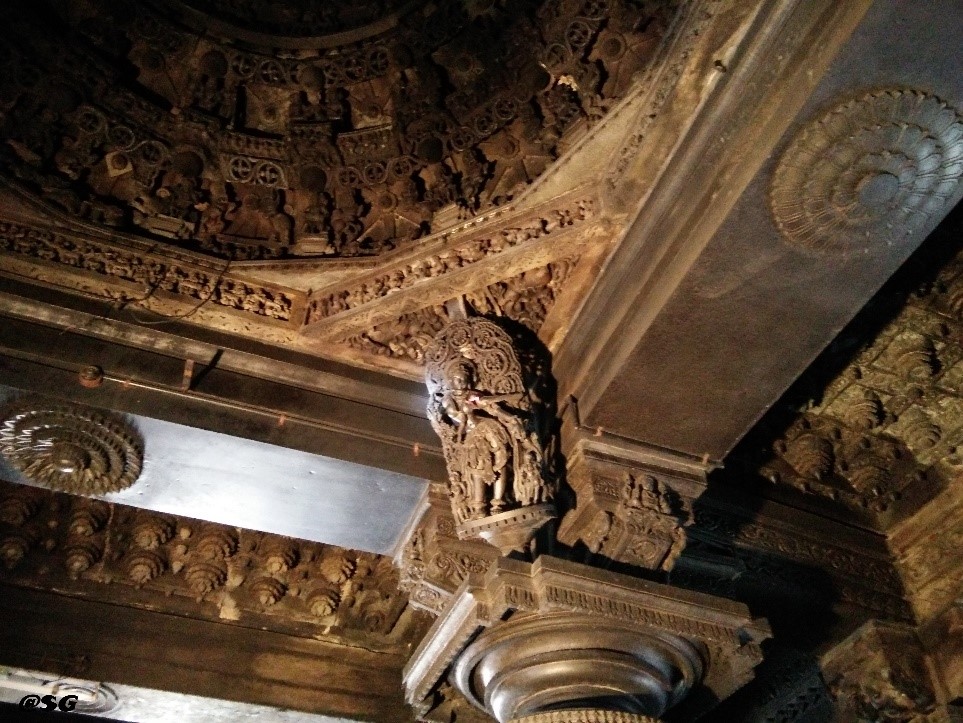

The sthamba buttalikas are pillar images that show traces of Chola art in the Chalukyan touches. Some of the artists working for the Hoysalas may have been from Chola country, a result of the expansion of the empire into Tamil-speaking regions of Southern India. The image of mohini on one of the pillars in the mantapa (closed hall) of the Chennakeshava temple is an example of Chola art.

The pillars inside the hall stand out as a major attraction. The navaranga hall has forty eight pillars. Two pillars are particularly notable. One is the called Narasimha pillar. The local guide told that this pillar once could rotate because of how it was supported, but it no longer can be rotated.

Beside the main temple there was small, less elaborate shrine called Kappe Chennigaraya temple which was built by Shantaladevi-Vishnuvardhana’s queen.
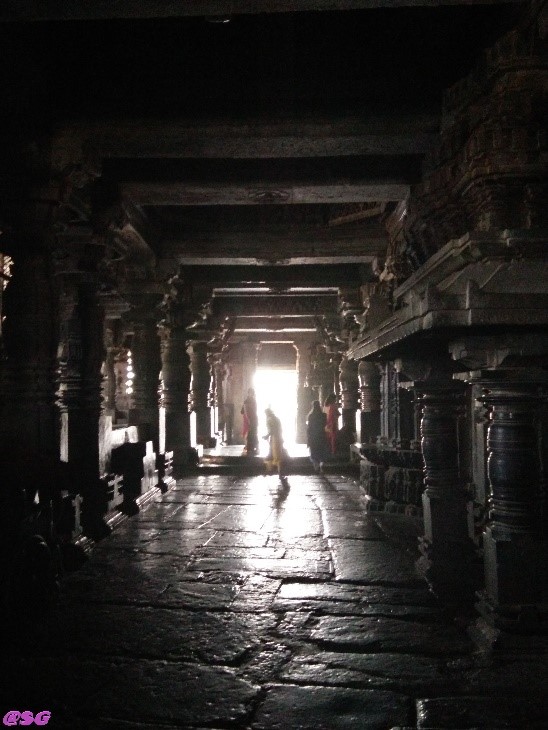
Hoysaleswara Temple – Helebidu
Halebidu is about 16 kms from Belur. The main attraction here is Hoysaleswara temple. Hoysaleswara or Halebidu Temple is a 12 century Hindu temple dedicated to Lord Shiva. The temple is a simple Dvikuta Vimala, meaning that it houses two main shrines; one dedicated to Hoysaleswara and another to Shantaleswara (named after Shantala Devi, wife of King Vishnuvardhana). The sculptures here are in more detailed than the ones at Belur!. .The walls of the temple is covered with stone carvings of gods. The figures are very expressive and the amount of detailing is incredible. Temple is surrounded by lush green space where you can sit and rest also.
1. Temple Facade
Hoysaleswara temple is known for its exquisite architecture on the outside of its walls. The temple outer walls is intricately carved. The wall is full of friezes and wall images on the outer wall predominantly narrate the Ramayana, the Mahabharata, the Bhagavata Purana, the other major Shaiva and Vaishnava Puranas.
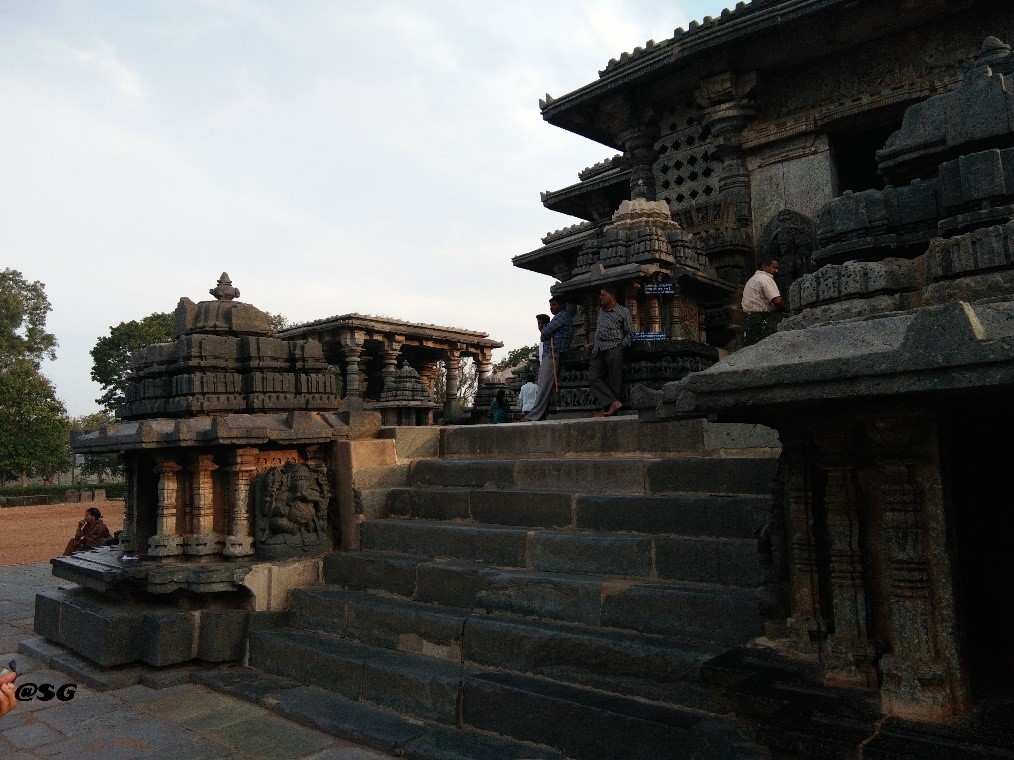
There are representations of Goddess Kali and Goddess Durga, showing feminine energy at one end contrasted with Goddess Saraswati, the patron of arts, music, learning and knowledge. Then there are various reincarnations of Lord Vishnu ; the most prominent being Lord Krishna lifting the mountain Govardhana on this finger. There are many idols of shiva and his avatars. Apart from these there are innumerable carvings of elephants, lions, scrolls, horses, scrolls, puranic scenes.
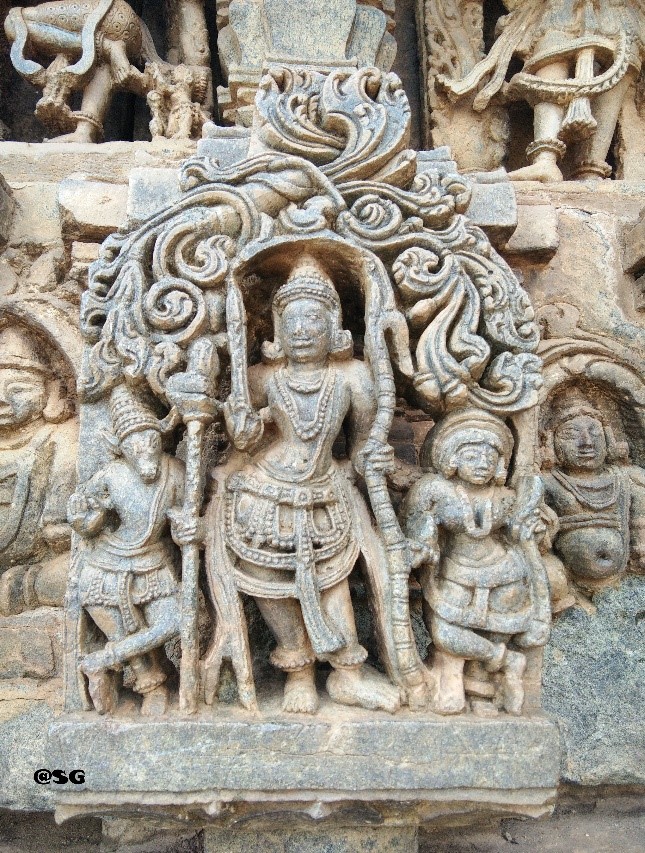

2. Interior Architecture
Compare to outside work, inner part of the temple is quite plain. The temple has four entrance. Outside the main entrance, six feet long idols of dvarapalas (doorkeeper) are there. Each have four hands (two of them broken) .Them hold shiva’s item such as damru, snake, trisul and others. Both are heavily jeweled. Above the door the artwork showing Shiva in tandava pose along with Nandi and Parvati.

A idol of Shiva or Shivalinga is situated in the temple sanctum. The superstructure of the shrine is also beautifully carved. But all these are destroyed now. Stories of Ramayana, Puranas are also sculpted inside the temple.
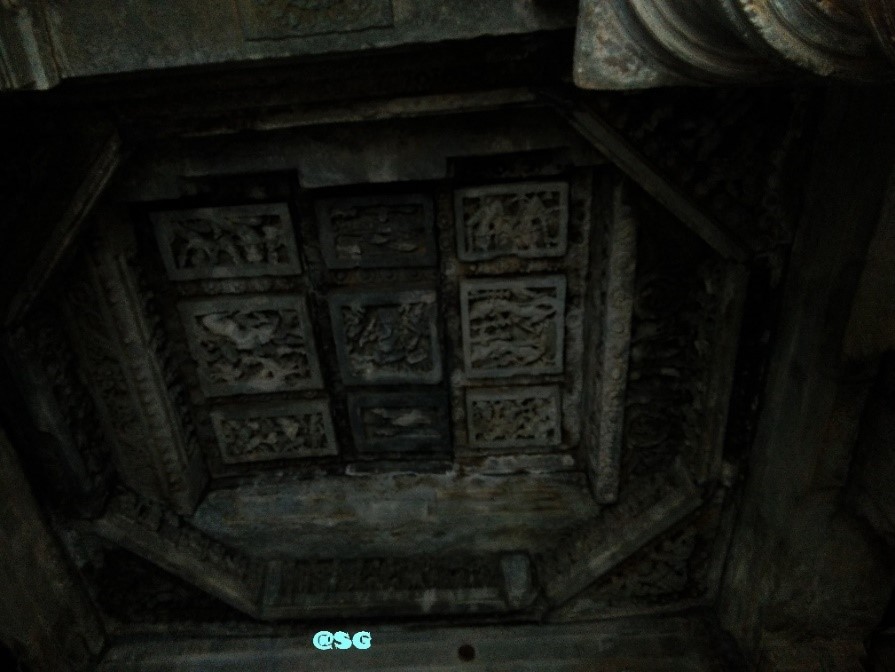
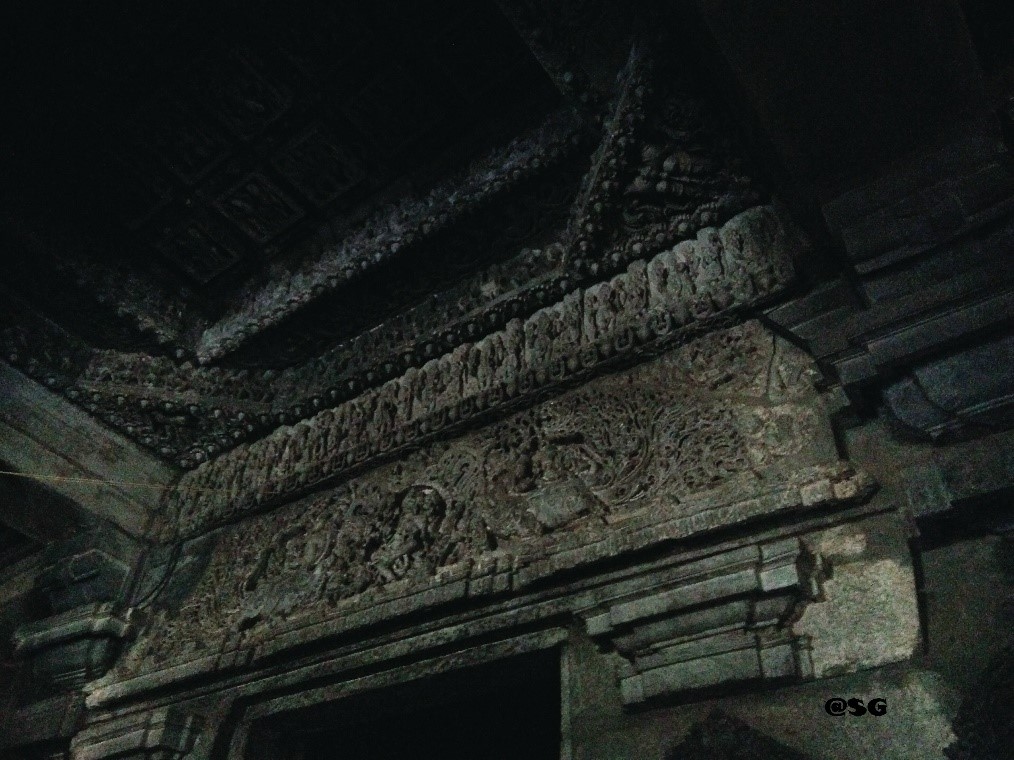
Apart from the two main shrines, there is a 7 ft tall image depicting the Sun God, Lord Surya and a massive sculpture of Nandi (Shiva’s attendant).
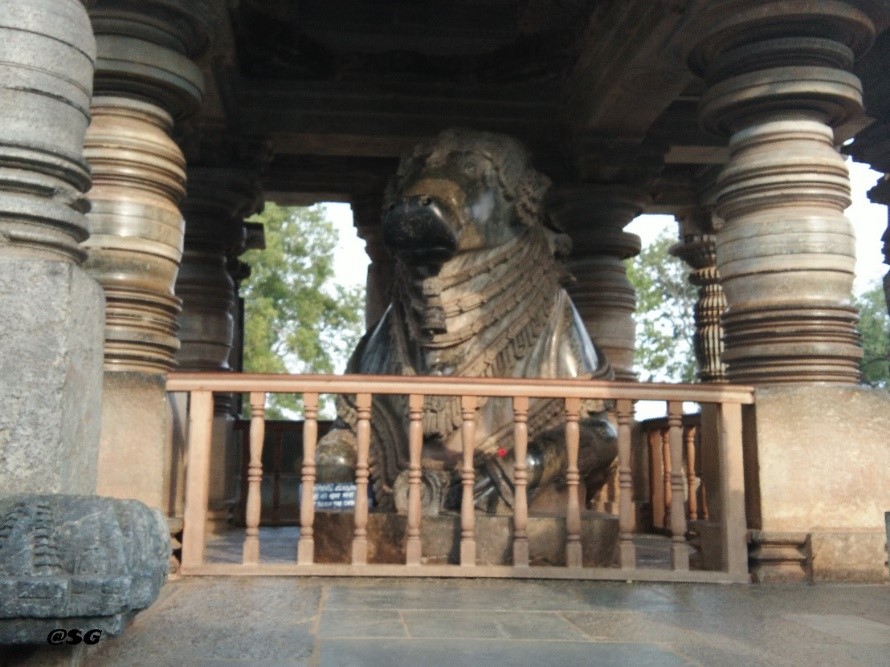
The artwork and the architecture of the Hoysaleswara Temple are damaged because of the sacking by invaders in the late 14th century.
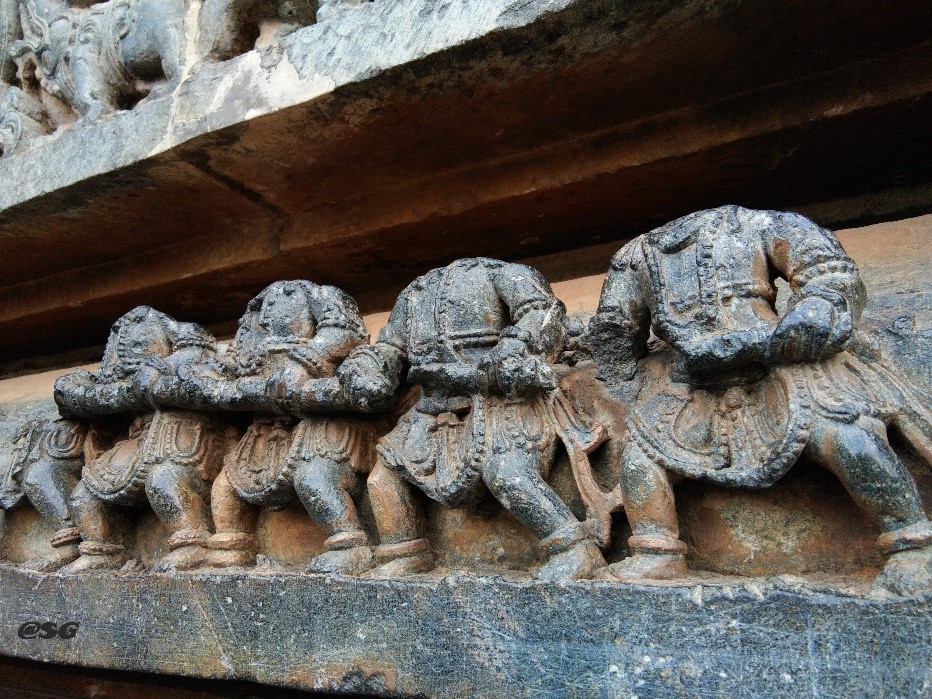
On our way back, we made a promise to make another road trip soon.
For more interesting Travel and Guest posts, keep visiting my blog.

About the Author
I am Swagata Ghosh, a travel and a food enthusiast. I work in corporate sector, so whenever I get time from my 9-5 work schedule I travel to different places, try their cuisines and learn about the cultures. I have been a solo traveler and group traveler. My first solo trip was in Shantiniketan- small town in the Birbhum district of West Bengal. I think Travelling is in my genes as my parents also love to travel.
I have a YouTube channel called Dil_se hippie and recently created a Facebook Page with the same name. You can follow me on Instagram too.



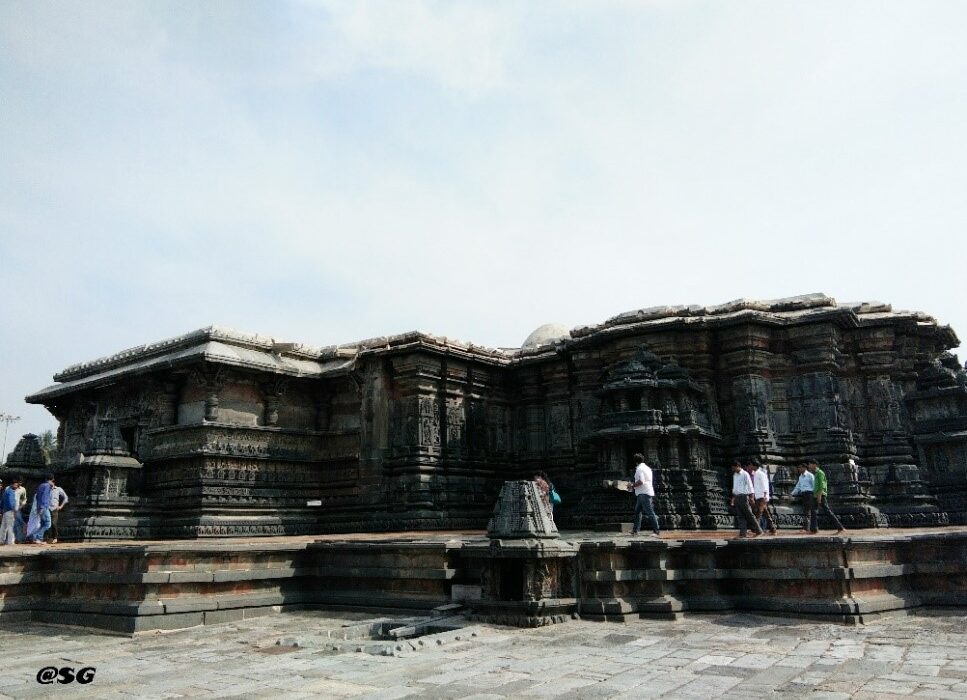




jaya1966
That is really an excellent description of a beautiful place. The images are great and brings out the glorious cultural heritage of India. I have not visited Karnataka much but your descriptions of the temple’s architecture make me want to book my tickets immediately. Great post!
Sham
Thank you so much for your kind words. Yes I insist you should visit the beautiful state of Karnataka. It has lots of stuffs to offer. Belur-Halebidu is just one of them. Thanks for reading the post and sharing your thoughts.